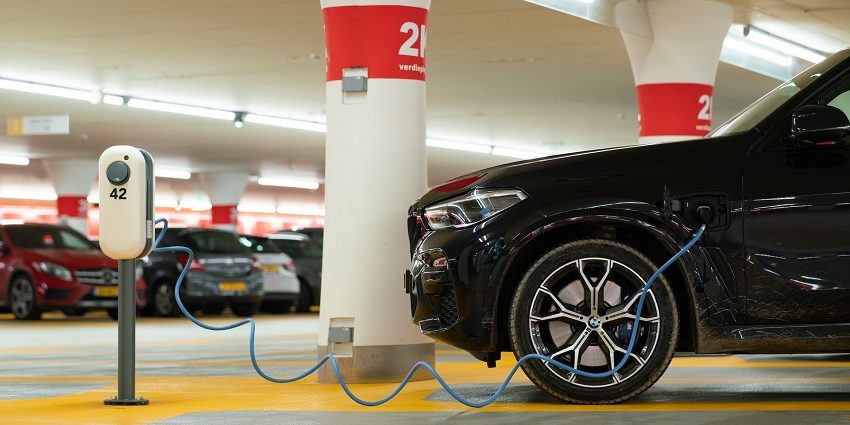
Staying aligned with increasingly stringent standards in the U.S. will help our auto industry more than the plan to set Canada-specific EV targets.
by Brian Kingston. Originally published on Policy Options
September 6, 2022
The Inflation Reduction Act just signed by U.S. President Joe Biden is arguably the most significant development for Canada’s auto sector since passage of the CUSMA/USMCA/TMEC trade agreement – and possibly more so. The U.S. is committing more than US$370 billion to fight climate change, including massive new investments in electric vehicle (EV) manufacturing, sales and infrastructure.
It is up to Canada to keep up and keep aligned with the United States. Canada’s auto industry has thrived thanks to longstanding integration and alignment with the larger U.S. automotive sector. The Liberal government’s plan to remove Canada from the integrated North American automotive market by establishing regulated EV sales targets of our own will work against this alignment. As well, new incentives should be introduced to support the EV supply chain and to ensure Canada remains competitive with the United States. Finally, there needs to be a serious plan for EV adoption.
The good news for Canada is that EVs manufactured here will qualify for up to US$7,500 (or approximately C$10,000) in consumer incentives when they are sold in the United States. This is a victory, and the federal government deserves full credit for championing North American integration of the auto industry.
The Biden presidency gives Canada’s EV sector a golden opportunity
Bending the emissions curve requires flexibility
Why Canada needs a national zero-emission vehicle standard in 2021
The U.S. incentive rules won’t please everyone because they are linked to sourcing EV battery components and critical minerals from North America or countries with which the U.S. is in trade agreements.
But they may be a win for Canada given our relative wealth of the minerals needed for the future. By aligning our auto industries under a common set of regulations and trade rules, and helping each other succeed, Canada can prosper as a full partner in the transition to electric.
Even more significant than the revised tax credit is a huge new suite of incentives linked to manufacturing EVs and components inside America. The U.S. government has now joined the efforts of states and municipalities to accelerate the EV transition. This includes billions of new federal dollars that will entice global automakers to locate EV assembly plants, battery facilities, critical mineral processing and related auto parts production in the United States.
Here is how Canada should respond.
The first priority should be ensuring our regulations and trade rules with the U.S. continue to be aligned so we are full participants in the transition to EVs.
Since the 1960s, Canada has reaped economic and social benefits by being part of an integrated auto sector in North America. Through common regulations and competitive supports, we manufacture and sell into a market accounting for annual sales of nearly 20 million vehicles( Scotiabank global auto sales outlook, Table 1). This remains an essential pillar of Canada’s manufacturing economy.
It is this integration that has allowed Ford, General Motors and Stellantis to make historic investments in Canada to produce battery electric vehicles. This will further strengthen the North American automotive market.
The federal government’s plan to decouple Canada from the North American automotive market by establishing Canada-unique, regulated EV sales targets works directly against integration – akin to putting the puck in your own net after tying the game.
Instead, Canada needs to keep harmonizing its policies with the newest American regulations for vehicle emissions, which are increasingly stringent. The most effective way for Canada to lower vehicle emissions and meet our EV sales objectives is to stay aligned with the U.S. Environmental Protection Agency.
Second, Canada must understand, identify and react to the competitive gaps in our manufacturing sector that will be exacerbated by the act. These competitive gaps are most obvious in clean energy manufacturing, where the act earmarks over US$60 billion to support EV and battery manufacturing, among other technologies. In response to the Trump tax cuts in 2017, former minister of finance Bill Morneau moved quickly to ensure Canada could compete by introducing investment incentives. While Canada will never be able to match the U.S. dollar-for-dollar, incentives targeted at the right segments of the EV supply chain will level the playing field.
Canada is falling behind on transition to electric vehicles
Mining gives Canada a competitive advantage in electric vehicle market
Finally, the federal government needs to develop a serious plan to boost EV adoption if we are to keep pace with America. This means keeping the commitment to increase EV purchase incentives. Equally important is a plan to put Canada on the path to building the four million chargers required to support an electrified fleet, along with investments in clean, affordable and reliable electricity generation and grid infrastructure to keep the vehicle fleet charged.
Subscribe to our newsletter.
U.S. President Biden has put America in the pole position in the race to electrify the automotive industry. Canada needs to keep up.
This article first appeared on Policy Options and is republished here under a Creative Commons license.


